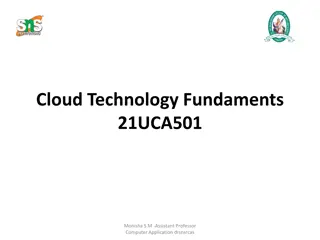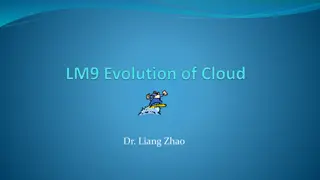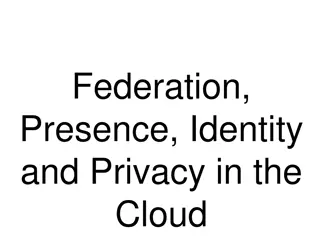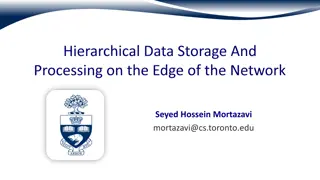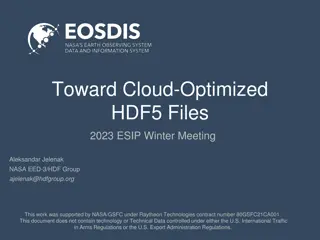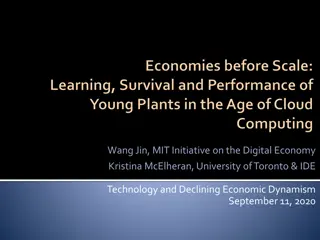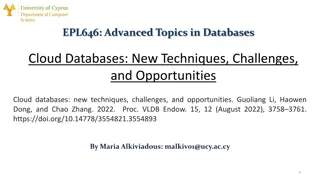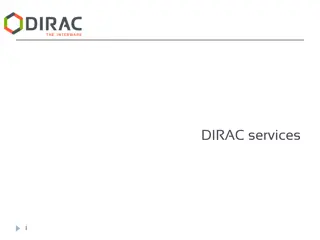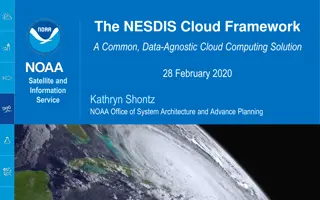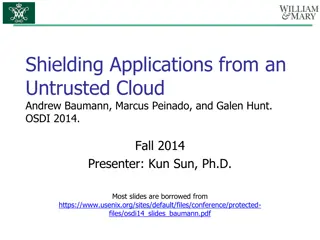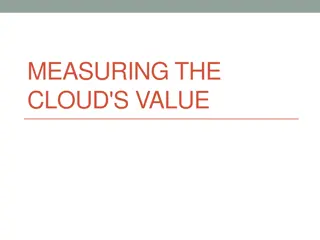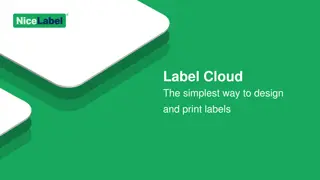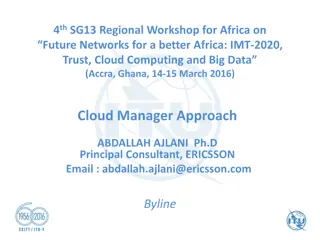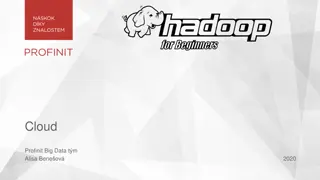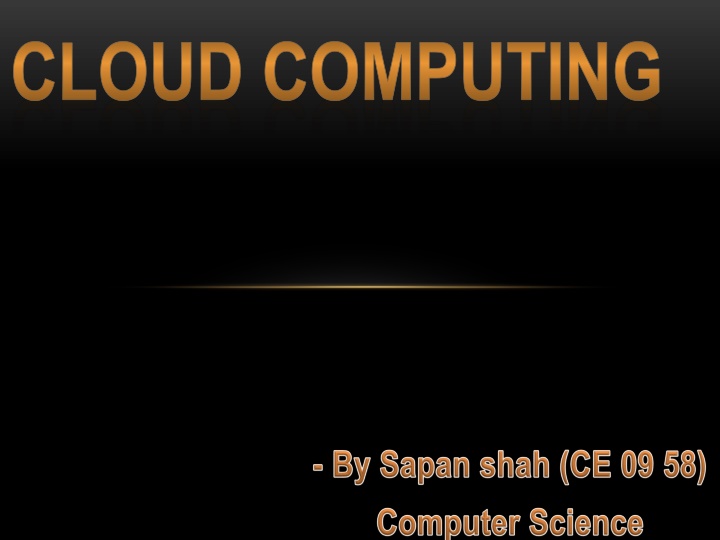
Cloud Computing: Technology Overview and Benefits
Cloud computing involves moving computing tasks away from local computers to centralized servers accessed via the internet. It offers on-demand access to software and information without the need for local storage. This technology provides various benefits, such as scalability, cost-efficiency, and accessibility. Learn about how cloud computing works, its types, layers of services, advantages, and disadvantages.
Uploaded on | 0 Views
Download Presentation

Please find below an Image/Link to download the presentation.
The content on the website is provided AS IS for your information and personal use only. It may not be sold, licensed, or shared on other websites without obtaining consent from the author. If you encounter any issues during the download, it is possible that the publisher has removed the file from their server.
You are allowed to download the files provided on this website for personal or commercial use, subject to the condition that they are used lawfully. All files are the property of their respective owners.
The content on the website is provided AS IS for your information and personal use only. It may not be sold, licensed, or shared on other websites without obtaining consent from the author.
E N D
Presentation Transcript
What is Cloud Computing? Explanation How it s works? Types of Cloud Computing Layers of Cloud Computing Services Advantages & Disadvantages
moving computing and data away from the desktop & the portable PC and simply displaying the result of computing that takes place in a centralized location and is then transmitted via internet to user s screen. It offers the ability to access software or information that can be delivered on- demand , over the internet , without the need to store it locally.
A simple example of Cloud Computing is Yahoo or Gmail etc. You don t need a software or a server to use them. All a consumer would need is just an internet connection and you can start sending emails. The server and email management software is all on the cloud(internet) and is managed by the cloud service provider like Yahoo, Google etc. The consumer gets to use the software alone and enjoy the benefits. The analogy is If you only need milk, would you buy a cow? . All the users need is to get the benefits of using the software of computer like sending emails etc.. Just to get this benefit (MILK) why should a consumer buy software (COW)?
In a cloud computing system, theres a significant workload shift. Local computers no longer have to do all the heavy lifting when it comes to running application. The network of computers that make up the cloud handles them instead. Hardware and software demands on the user s side decrease. The only thing the user s computer needs to be able to run is the cloud computing system's interface software, which can be as simple as a web browser, and the cloud s network takes care of the rest.
Can logically be divided into 2 sections Front end Back end
Front end includes the client s computers application required to access the cloud computing e.g.: Internet Explorer, FireFox etc. Back end includes computer networks, servers and any data storage system Practically, any computer program you can imagine from data processing to video games Control node also called as Central server.
Private Cloud Public Cloud Community Cloud Hybrid Cloud
Provide hosted services to a limited number of people. Reliable Secure Efficient Controlled Flexible
Service provider makes resources dynamically available Benefits: easy and in expensive setup scalability no wasted resources Ex: Amazon Elastic Computer cloud, IBM s Blue Cloud, Sun Cloud, Google AppEngine.
Organizations having similar requirement Privacy, security, and policy compliance Ex.: Google s Gov Cloud
Multiple internal and external providers Composition of more clouds Application: Archiving of backup functions. deploying a web application in the cloud.
The five layers: Client Computer, Phones (browsers) Application (SaaS) Google apps, SalesForce CRM Platform (PaaS) Google App Engine, Azure Nimbus, AWS Infrastructure (IaaS) Server Networks, Virtualization
Hardware & Software Essentially useless without cloud E.g.: Computers & phones.
Run over internet No need to install\maintain Complete, customizable application E.g.: Google Apps, SalesForce CRM.
Deployment without complexity Eliminate most management tasks Pre-built components E.g.: Google App Engine, Microsoft Azure.
Network of servers Virtualized Billed on utility ba E.g.: Nimbus, AWS.
Hardware \ Software Network of virtualized computer E.g.: better OS, multi- core processors
Data isnt chained to one place; rather, it can be accessed anywhere, from any medium. Processor speed becomes less important then internet connection speed. Netbooks become practical. Low maintenance. Privacy.
No control over the business assets (data). The main assets in every company are its data files with valuable customer information. Physical location of hardware and software is unknown. Site inspections and audits are hard. Availability. Constant connectivity is required. Risk of data loss due to improper backups or system failure.

